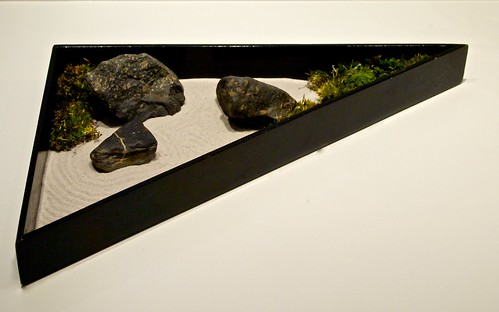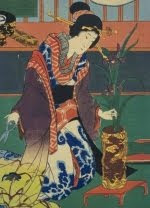Morimono is usually ikebana arrangements with fruits and vegetables together with plant materials. The literally meaning is "things piled up", like moribana means "flowers piled up". A morimono arrangement can also be made with other natural materials, such as in these arrangements with stones. They can be made with nothing but stones and sand or with additional moss and branches, whichever one prefers.
The sand is raked with a fork in patterns, resembling the raked gravel in a Zen buddhist rock garden. That reference is quite obvious, and the goal is that the arrangement should have a floating feeling and a calming effect on the viewer.
When using stones instead of plant materials it is the stones you need to examine, pretty much the same way as you do with the flowers when you're using them as the main material. What is the character of the stone? What movements and energies can you find in it? What happens if you turn it up side down? The most important thing is that the stones are similar in colour, shape and texture, and that they are placed so that there is a communication between them. As you can see in these two arrangements, the size of the stones corresponds with the main branches in a basic ikebana arrangement so that there is one Shin stone, one Soe stone and finally one Hikae stone.














No comments:
Post a Comment